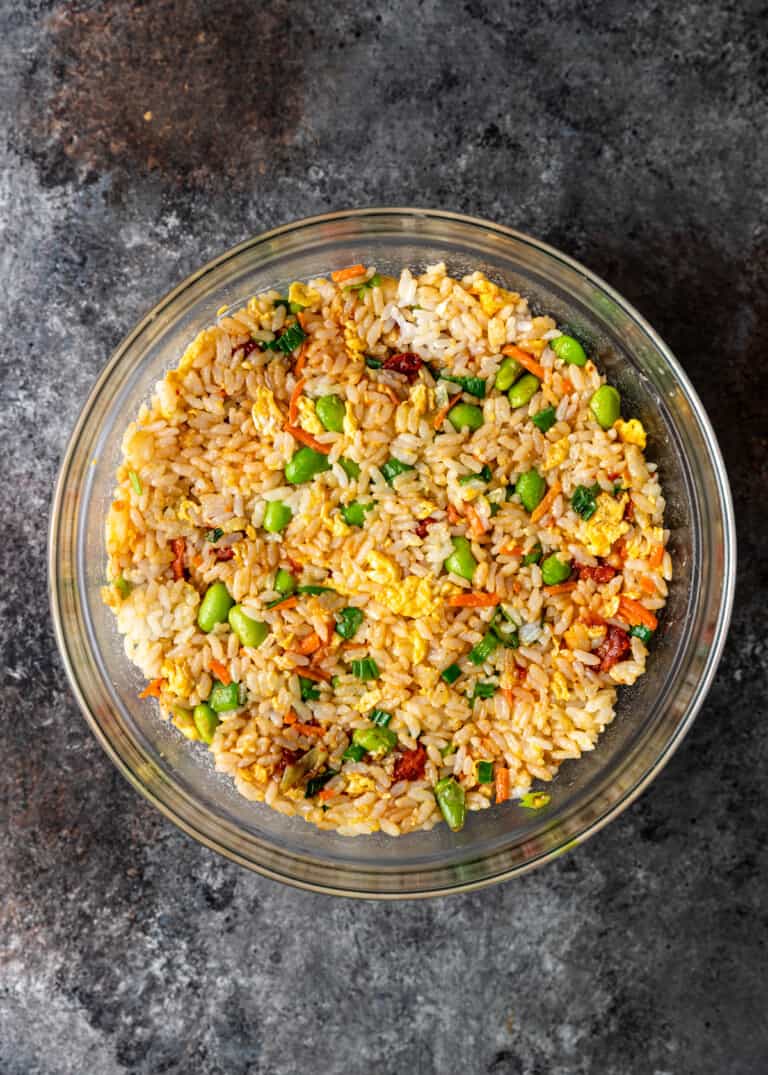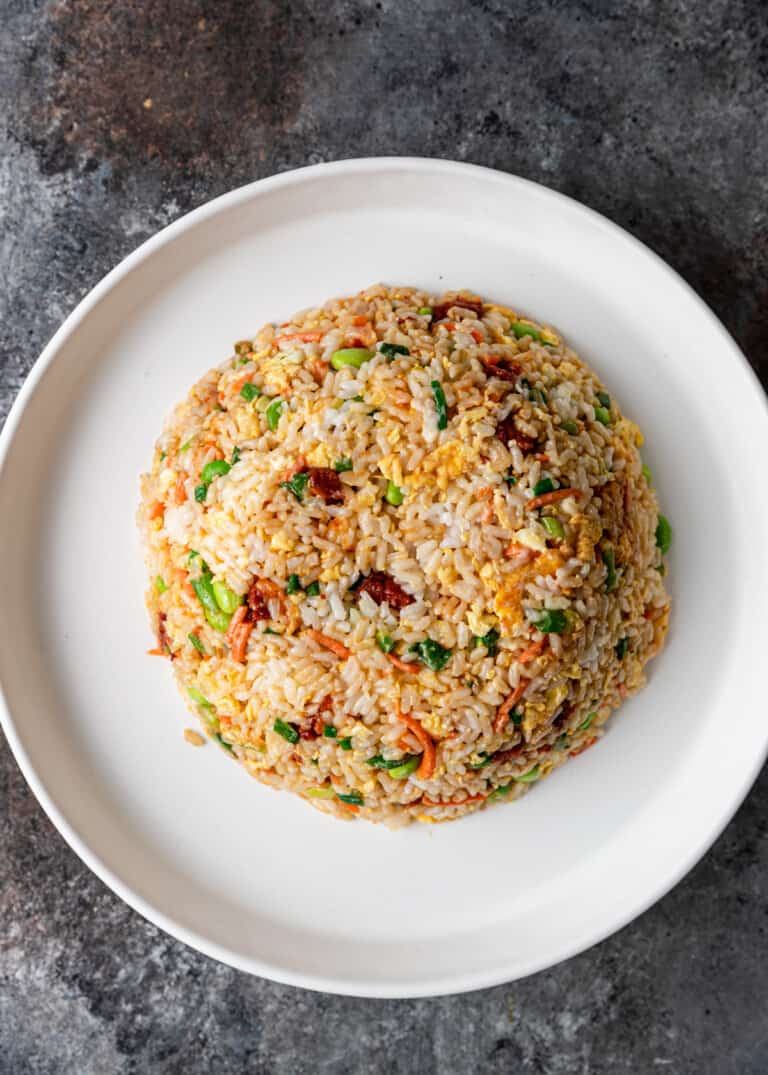published Mar 23, 2022, updated Jul 12, 2024 Restaurant-style Japanese fried rice we’re used to is usually prepared with shrimp, chicken, or beef. When I prepare it, I use char siu — it’s spicy, sweet, and heavily seasoned. Diced store bought ham works, too. This hibachi fried rice recipe is also incredibly versatile. You can use any protein you like, as well as any vegetables you have at your disposal: corn, peas, broccoli, cabbage, and even tomatoes are no stranger in Japanese fried rice. And while I tout it as a quick and easy weeknight dinner, hibachi fried rice makes an excellent side dish! It can bulk up a veggie-heavy meal, like ahi tuna salad or sunomono, or a saucy dish like Kung Pao meatballs. I love to make this whenever there is leftover rice from a previous dinner and it’s so versatile because you can clean out the fridge of vegetables, too!
Recommended Tools
Wok – When we’re working with a lot of ingredients and a high temperature, there’s nothing better than a wok. If you don’t have one, then use a frying pan that is at least 12 inches in diameter.
Storing and Reheating
Allow hibachi fried rice to cool completely before transferring to an airtight container or Ziploc bag. Store in the refrigerator for up to 4 days or in the freezer for up to 2 months.
White Rice – Short-grain varieties are best — Calrose, Koku Rose, Koshihikari, etc. Prepare the day before and refrigerate until use. Eggs – Use at least two to get fluffy eggs in every spoonful, but feel free to use even more! Sesame Oil & Vegetable Oil – Sesame oil is quite overpowering on its own. In this hibachi fried rice recipe, I combine it with vegetable oil to make it a little more palatable. Garlic – Mince well or use jarred, pre-minced garlic. Avoid powdered. Green Onions – Divide into the greens and whites — they cook at different rates, so we’ll add them at different times. Edamame – Frozen soybeans are a convenient, year-round ingredient to mix into Japanese fried rice. Frozen peas work too. Either way, thaw them before throwing them into the wok! White Pepper – The lingering, back-of-your-throat heat of white pepper stands out more than regular black pepper, though the latter is a fine substitute in a pinch. Ginger Sauce – Zesty, umami ginger sauce is one of the things that really defines the Japanese steakhouse experience! It’s surprisingly easy to make at home. Char Siu – I find that this hibachi fried rice recipe is especially delicious with tender Chinese BBQ. Otherwise, I’d suggest chopped ham.
To reheat, transfer to a microwave-safe container, add a tablespoon of water, and cover. Microwave for 2 to 3 minutes on high. If reheating from frozen, let it come to room temperature before microwaving. Love this recipe? Share it with the world on Pinterest.














